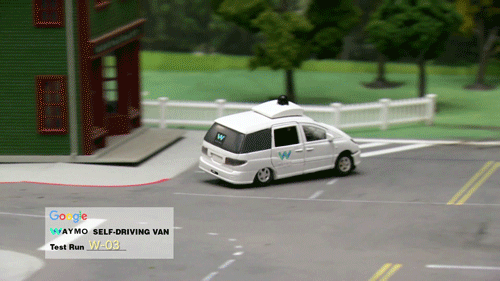🕶e8: E-commerce is King as Last-Mile Delivery Companies Struggle to Keep Up! Is the Autonomous Driving Competition Heating Up for Tesla?
👋 Good Morning and Happy Sunday! Welcome to the e8 newsletter, a hand-picked collection of business and start-up news, resources for entrepreneurs, job/internship postings, and noteworthy trends that are happening this week! I hope you find this weekly newsletter informative and engaging!
Business/Start-Up News
📦 E-commerce is King as Last-Mile Delivery Companies Struggle to Keep Up!
Between the salefest that kicked off after Turkey day to the Christmas extravaganza of Holiday sales, there’s a 99% chance that you’ll be ordering an item online this year... As such, e-commerce has experienced a boom in Q3, jumping up 37% and accounting for $1 out of every $5 spent by consumers this year. This means companies such as FedEx and UPS have had to kick into high gear to prepare for the holiday season. FedEx is looking to finalize a deal with ShopRunner and UPS is adapting with restrictions for certain retailers. Let’s take a closer look at how fast your holiday gifts will arrive!
FedEx
FedEx is expecting to acquire ShopRunner. For those unfamiliar, ShopRunner is similar to Amazon’s Prime 2-day shipping service, except it’s partnered with over 100+ different retailers. The acquisition will be beneficial to their e-commerce ecosystem as they strive to help merchants deliver seamless experiences to their customers. The two align perfectly between ShopRunner’s focus on pre-purchase offerings (where consumers compare and evaluate alternatives before acquiring the product), and FedEx’s established post-purchase logistics operations (allowing the company to reach a broad market with their innovative omnichannel solutions). At the end of the day, FedEx’s goal is to utilize technology and data to continue improving its end-user experience, while also being complemented by ShopRunner’s continued success in its consumer engagement and partnerships.
UPS
UPS has performed a bit better than FedEx due to a recent expansion of their sorting facilities, but not by much.The carrier still issued a directive earlier this week to stop picking up packages at retailers such as Macy’s, Newegg, and Hot Topic. Sounds crazy, right? In the past, shippers purchased extra space during the holiday season to accommodate the fulfillments. Retailers would then pay a premium price to ensure their items were delivered on time. However, such is not the case this year as retailers exceeded their volume agreements, the Wall Street Journal reported on Wednesday.
“2020 holiday season delay rates could be double the delays of past years. The average 2020 holiday delay rate is expected to be between 14 percent to 18 percent, though urban centers like New York and Los Angeles could see package delay rates as high as 30 percent.” (The “2020 State of Holiday Shipping in the US — COVID-19 Edition)
Ev’s Take
Well well well, what’s new about big companies just getting bigger? As I mentioned on previous newsletters, I believe there will be a select few dominant companies who continue to acquire and merge with other companies that align and complement each other's business models. FedEx made a smart move acquiring ShopRunner, as their partnerships opened up a wide array of new customers.
With regards to UPS, I think their decision to stop picking up packages from certain retailers will encourage stores to think outside the box on how to get the end product to their consumers. For instance, some retailers mitigated their shipment delays by announcing holiday deals earlier than usual. This allowed consumers to space out their purchases over the period, and delivery companies to perform their job more efficiently. In the future, I think they could also focus on developing a systematic curbside pick-up system.It’s quick, easy, and can be contactless!
All in all, if you haven’t started ordering gifts for bae yet, better start soon or she will be dipping before the afternoon. Jokes aside, I got no bae and, unfortunately, I don’t think we will see the benefits of FedEx’s ShopRunner acquisition this holiday season with the deal still being worked out. Also, although UPS is streamlining their omni-channel operations, they should probably act quickly so as not to lose out on any potential agreements with retailers moving forward (switching costs for retailers are low, meaning it’s easy to just switch to UPS’ competitor FedEx). Hopefully by the 2021 holiday season, retailers and parcel companies will have adapted to best serve their consumers, and maybe I’ll find myself a bae?
🏎️ Is the Autonomous Driving Competition Heating Up for Tesla?
‘Magine being the youngest self-made billionaire in the world. And I’m not talking fake revenue lookin’ Kylie Jenner (sorry not sorry). I’m here to talk about Austin Russell, the founder of Luminar, who is currently worth over $3.1B... This past Friday, his company made headlines after they went public through a Special Purpose Acquisition Company (SPAC). If you’ve been an e8 subscriber, you already know what these are, but for those who are new and don’t know - time to learn here! Before we dive into the company, it’s crazy to note that Austin actually skipped high school, went straight to Stanford, and then dropped out after joining Peter Thiel's Partnership and receiving a $100,000 stipend to start Luminar.
What iz thiz Tech? And Why Should I Care?
Since the founding of his company back in 2012 at the age of 17, Austin has prioritized on building his Lidar technology from the ground up. Instead of following the traditional industry pattern of a 360-degree spinning unit on top of a vehicle roof, he chose to put a fixed sensor with a 120-degree horizontal front field of view on the vehicle. This doesn’t seem like much of a difference until you look closer into the frequencies that the sensors work off of. Traditional lidar sensors operate at around a 900nm frequency; however, their range and power is limited due to the fact that they can damage human retinas (I feel like every new car with laser headlights already does this to me lol). Meanwhile, Luminar sensors operate at 1550nm which greatly reduces eye safety concerns and allows the sensors to work at longer ranges, giving the AI more time to figure out its surroundings and adjust its driving style. This has caught the eye of multiple manufacturers (Volvo, Intel’s Mobileye, Daimler Trucks, and Torc Robotics) who have since struck up partnerships with the Luminar to help develop Lidar technology in their own lines of cars.
Ev’s Take
Alright alright, you know it’s time for my favorite part, the money. Realistically, this company has a long road to profitability. While yes, the company’s shares were trading nearly 40% higher on opening day, the company has lost $94.7 million in 2019, following a loss of $79.6 million the year before. You will shortly find out why (and if you don’t understand its cuz this ish AINT cheap). Their own tech is what’s eating up the budget. Just installing one of these puppies can cost up to $10k per car...
Last but not least, we have to talk about the elephant in the room Te-Te-Tesla. Interestingly enough, a majority of the players in the autonomous driving space are currently adapting and utilizing LIDAR technology. I’m talking about Uber, Toyota, Waymo, and more, with the exception of Tesla. What's Elon doing differently and who will be leading the race - LIDAR or Tesla!?!
Side note: if you haven't had the chance to check out Tesla’s Autonomous Day, I’d highly recommend watching it.
Okay let's get to the good stuff. While a majority of major self-driving automakers are pouring millions of dollars into developing LIDAR detection on their devices, Tesla has been focusing on “Computer Vision” sensors working with AI to train the computer to understand and read the visual world at a WAY cheaper cost. Tesla has made strides to produce affordable cars, and they will probably be able to keep it up. Not only are they saving by using their own vision technology, but their technology is actually argued to produce more accurate results than LIDAR. Everything we see is visual information, therefore, training computers to read objects as opposed to relying on laser technology to detect moving objects, which cannot differentiate plastic bags from simple objects as a road bump ultimately makes me skeptical of why a majority of these automakers are choosing to go the LIDAR route???
All in all, saying Austin has done an incredible job is an understatement. It will be interesting to watch the two opposing companies battle it out, but only time will tell who will take the crown. You know which one I got my $ on!)
👀 Interesting Follows
👀 Is The Great Stagnation Over?
💾 Kubernetes: What You Need To Know
✈️ Drones Are Poised To Reshape Home Design
📈 Total DeFi Addresses Break Past One Million As Crypto Heats Up
💼 Jobs/Internships
New York
Engineering and Technology Summer Internship (Moody’s)
Social Media Intern (NASDAQ)
Data/Product Analyst (Uber)
Los Angeles
Data Science Intern (Salesforce)
San Francisco
Chicago
Quality Assurance Summer Analyst (BMO)
Software Engineer (Salesforce)
🎷 Fresh Finds
💯Thank You For Reading, See You Next Week!
What's up, my name is Evan Hiltunen! I am a recent finance grad from Indiana University and financial analyst @ Goldman Sachs. I have a strong passion for start-ups, finance, and technology, and I hope you find this newsletter informative!
I’d love your feedback - feel free to email me at thee8newsletter@gmail.com
www.e8newsletter.com





